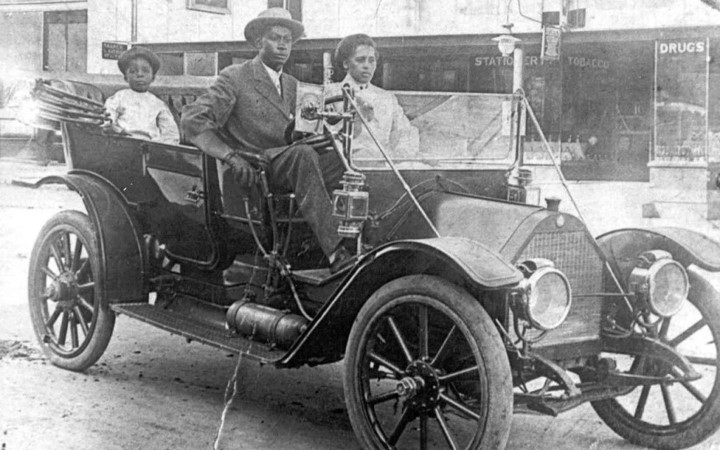By May 30, 1921, Black Tulsans had built their own “Wall Street”—a vibrant, peaceful, and extraordinarily prosperous community located in the neighborhood district known as Greenwood.
the Greenwood neighborhood was home to more than 10,000 African Americans as well as hundreds of thriving Black-owned businesses and organizations. Running north out of the downtown commercial district and shaped, more or less, like an elongated jigsaw
puzzle piece, Greenwood was bordered by the Frisco railroad yards to the south, by Lansing Street and the Midland Valley tracks to the east, and by Stand Pipe and Sunset Hills to the west. Greenwood was bordered by the Frisco railroad yards to the south, by Lansing Street and the
Midland Valley tracks to the east, and by Stand Pipe and Sunset Hills to the west. Greenwood was unlike any other Black community in the country. Its founders and residents had successfully created an affluent, self-sufficient, and flourishing community.
Much of the land and the structures in Greenwood were owned by Greenwood residents. Black people from around the country visited Greenwood to witness and enjoy its prosperity.
For example, the multi-millionaire community leader Attorney J.B. Stradford, the wealthiest man in Greenwood, built the Stradford Hotel which was known as the largest and finest African American owned hotel in the United States.
Community leader Attorney A.J. Smitherman published the nationally influential Black-owned newspaper, the Tulsa Star, and served as the President of the Western Negro Press Association, the purpose of which was to represent Black newspaper publishers west of the Mississippi.
Famous for its social cohesion & economic strength, Greenwood became known throughout the United States as “Black Wall Street.” The community had two black schools, a black hospital, and two black newspapers thirteen churches and three fraternal lodges plus two black theaters.
Along Detroit Avenue & certain other streets were the neat, sturdy homes of some of those black Tulsans who owned business lining Greenwood Avenue, augmented by the houses of the city’s black professional class. Within this elite group were many what assets in excess of $100,000.
The great Dr. W.E.B. Du Bois once said of Greenwood, “I have never seen a colored community so highly organized as that of Tulsa.” Greenwood residents had everything they needed within the geographic boundaries of their community.
Indeed, “Black Wall Street” was so economically self-sufficient that purportedly every dollar that came through it circulated through the community fifty times, and it sometimes took a full year for currency to leave the community
All of that changed on May 31, 1921, when a mob of 2,000 white Tulsans, City of Tulsa officials and officers among them, pillaged and destroyed the entire Greenwood community during the deadliest and most devastating race massacre in the history of the United States.
By sunrise on June 1, 1921, the once prosperous 36-block Greenwood community lay utterly destroyed. In what is now known as the Tulsa Race Massacre. Scores of successful businesses were lost. Estimates of the total property damage have amounted to between $50M-$100M.
Worse, hundreds or even thousands died. Thousands more were injured. Still, more were left homeless—many forced to flee their hometown and never look back. Some were simply never heard from again.
And those who managed to avoid physical injury were still left destitute and forever traumatized by the horror of what they had experienced and witnessed —a burden they and their descendants would carry for generations. #JusticeForGreenwood
Although the Black residents of Greenwood were the innocent victims, in the Massacre’s immediate aftermath, the @cityoftulsagov and @tulsachamber falsely blamed survivors for the violence and destruction that annihilated their community.

 Read on Twitter
Read on Twitter
















